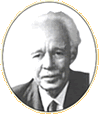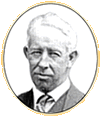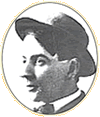





A Brief History of 'The Group of Seven'
The 'Group of Seven' is the most famous association of Canadian artists in our country's history. The seven artists who formed 'The Group of Seven' in 1920 included Franklin Carmichael, Lawren Harris, A.Y. Jackson, Frank Johnston, Arthur Lismer, J.E.H. MacDonald and Fred Varley. Tom Thomson was a major influence, if not an inspiration, for 'The Group'; but, unfortunately he died under mysterious circumstances in a canoeing accident in Algonquin Park in 1917, three years before 'The Group of Seven' was officially formed.
These artists wanted to free themselves from the artistic traditions and influences of England and Europe and set out to be different. They wanted to carve a distinct Canadian identity in art and celebrate what was dear to them about Canada through their expression of the majesty and grandeur of the Canadian landscape. Their work reflects a Canadian spirit with bold use of colour and broad sweeping brush strokes. Initially their new style created controversy.
All of the artists started as graphics designers and commercial artists, and with the exception of Lawren Harris, who was independently wealthy and helped to financially support them, had to keep their 'regular' jobs to earn a living. In 1920 'The Group of Seven' held their first exhibition at the Art Gallery of Ontario. They wondered what to call themselves, but no single theme united their work. The only thing that could be said about them was that they were a group of seven artists - hence, the name 'The Group of Seven'.
Reviews of their first exhibition were positive. After The Group's first Show in 1920, Frank Johnston dropped out to pursue his own individual direction as an artist and The Group was reduced to only six members for several years. In 1926, A.J. Casson was invited to join 'The Group of Seven'.
Based in Toronto, members of The Group travelled all over central and northern Ontario to such regions as Algonquin Park, Algoma, Georgian Bay, Haliburton, and Lake Superior. Many members of The Group also visited and painted across Canada in such locales as The Rockies, The Arctic and the St. Lawrence River in their search for new sources of inspiration. 'The Group of Seven' shared the belief that the rugged beauty of the Canadian landscape represented the spirit of the country.
The journeys to Lake Superior in the late 1920's were the last that the artists made together as a group; by then they had all begun to travel to different parts of the country, exploring their own interests, although they continued to exhibit their work as 'The Group of Seven'. Eight 'Group of Seven' exhibitions were held in the years 1920 - 1931.
In 1931, 'The Group of Seven' , which in its last exhibition welcomed the contributions of 28 other artists, decided to disband and form a new group that better represented artists from across the country. The Canadian Group of Painters held their first Show in 1933, exhibiting the work of 52 artists, including work from 'The Group of Seven'. The last member of 'The Group of Seven' - A.J. Casson - died in 1992.
